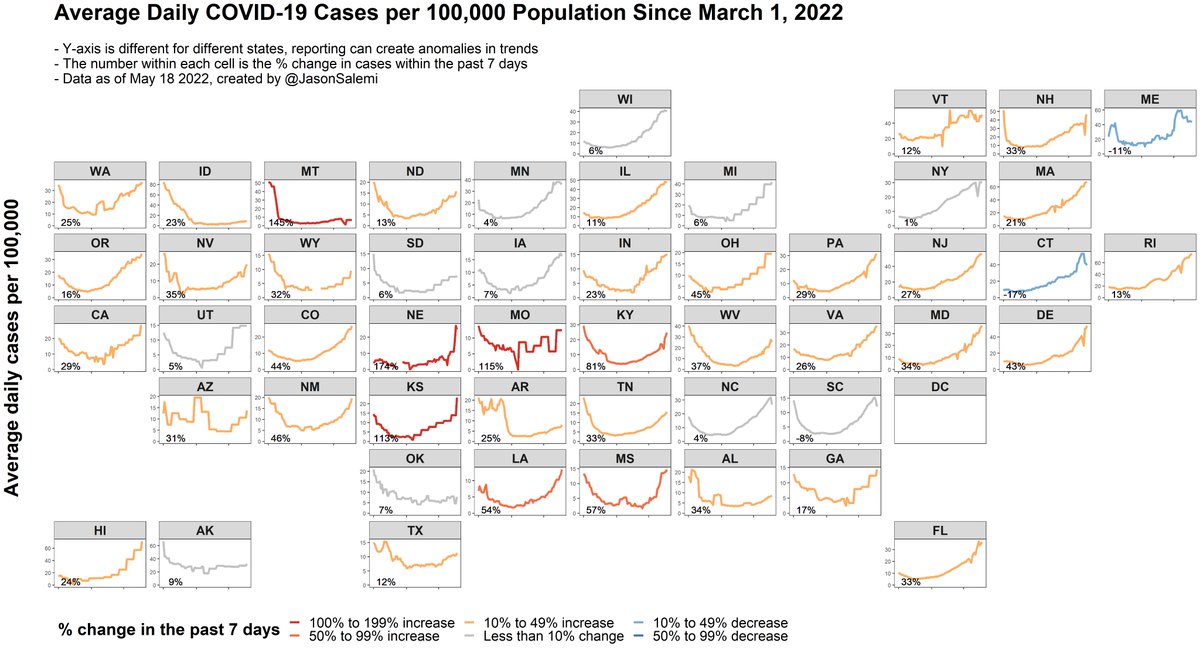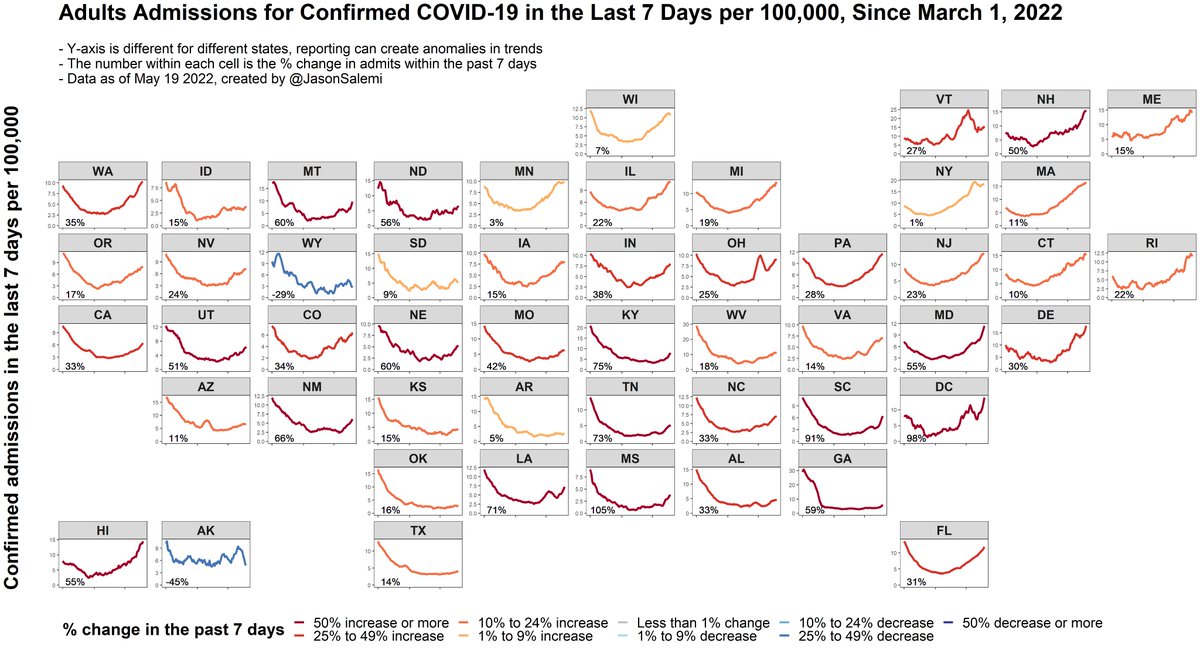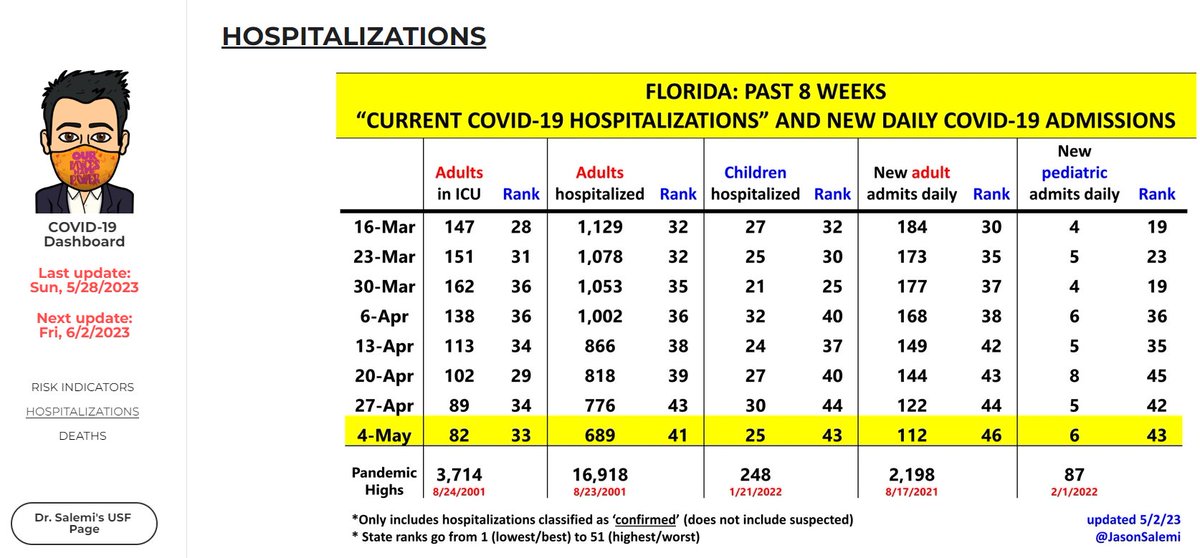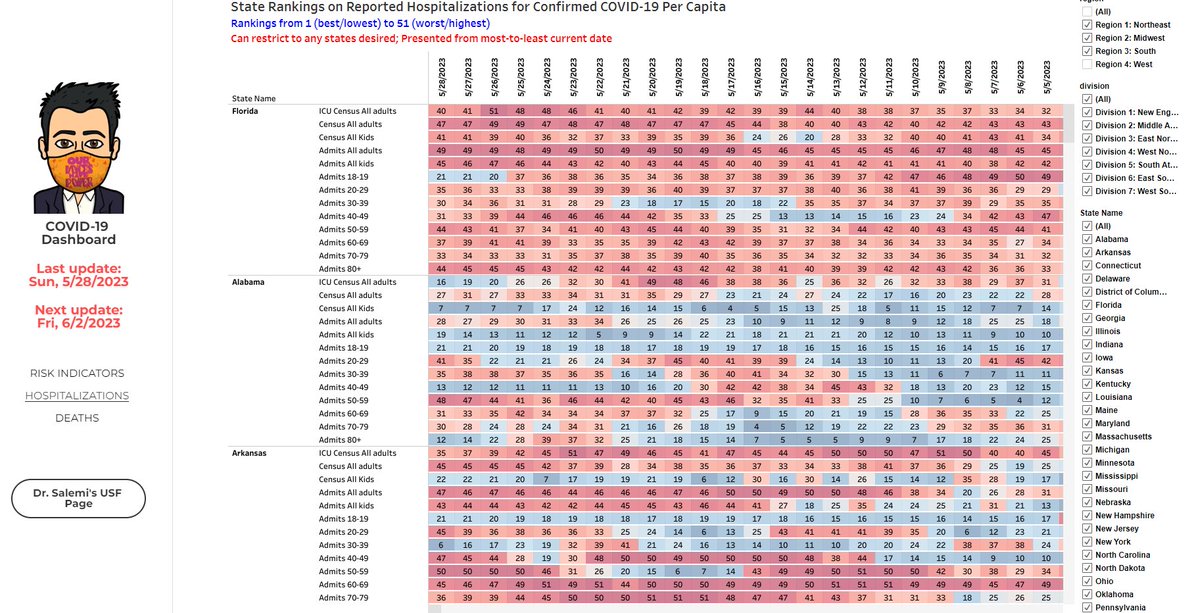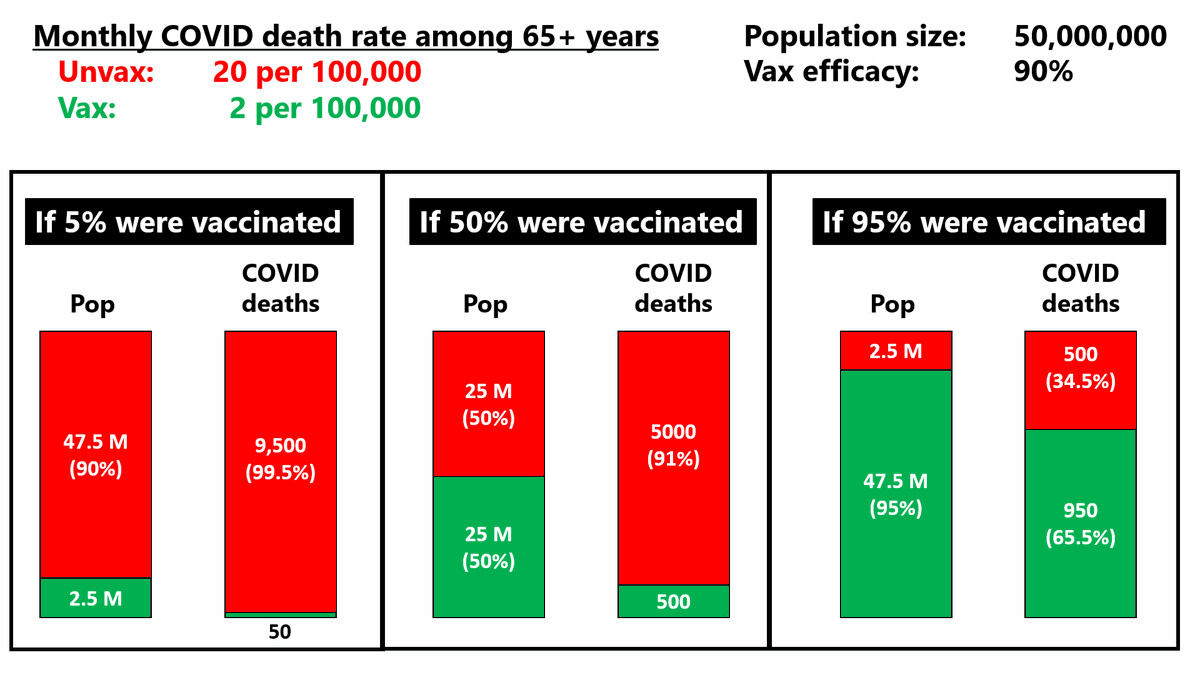1. Based on this week's @CDCgov transmission levels, it's not getting better.
Last week - 72% of people lived in high transmission areas, 89% in substantial or high.
Now, those numbers are 86% and 94%, respectively.
A quick 🧵
Last week - 72% of people lived in high transmission areas, 89% in substantial or high.
Now, those numbers are 86% and 94%, respectively.
A quick 🧵

2. Approaching half of the population living in an area with medium or high risk (based on hospital capacity and COVID hospital admission rates).
15% of the US population now lives in a "high" level area in which the CDC recommends masking in public indoor settings.
15% of the US population now lives in a "high" level area in which the CDC recommends masking in public indoor settings.

4. You can see the weekly progression of transmission in many states. So many places now have >90% of their populations in a high transmission area (including Florida). 

5. Also seeing more and more people living in medium or high level areas, even with the hospital-based levels. But that progression was to be expected based on the more leading edge indicators: community transmission. 

6. How transmission has changed over the past 3 months...
7. How hospitalization-based risk has changed over the past 3 months...
update for FL 👇👇👇👇👇
https://twitter.com/JasonSalemi/status/1527800525231575040?s=20&t=YFvVG5dArEDN-AAO2d0v5g
This @HealthyFla report, released today, fills in some of the Florida gaps that, for some reason, the CDC was missing in calculating community risk levels.
https://twitter.com/JasonSalemi/status/1527803735740624896?s=20&t=Bq7IM-v4sTecAZejBnZn2A
• • •
Missing some Tweet in this thread? You can try to
force a refresh


